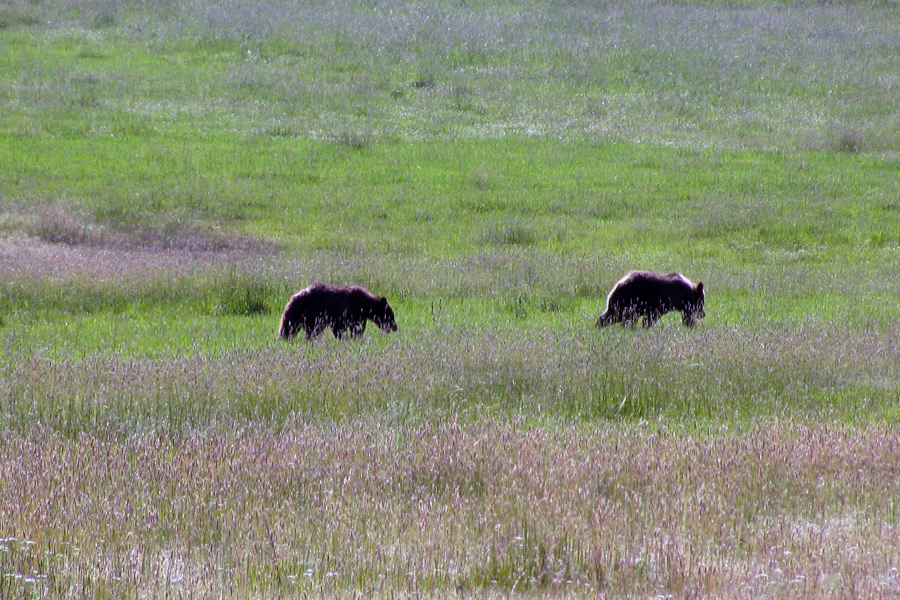The state’s Grizzly Bear Advisory Council convened online Aug. 19 to work out its final recommendations to Gov. Steve Bullock on how Montana should manage its grizzlies once the animals are federally delisted, but the group fell short of reaching consensus on the most divisive management tool — whether to sanction a hunt.
All told, more than 16,000 public comments were submitted since Bullock appointed the 18-member council, which consists of citizens from across the state with a “diversity of views and commitment to working together on the future of grizzly bears in Montana,” according to Bullock. The council is intentionally representative of the different parts of the state where grizzlies are currently or may soon be found.
Perhaps because of that diversity, its inability to find agreement on a grizzly bear hunt reflects the vigorous debate the species has generated for decades.
The stated goal of the council was to help initiate and steer a statewide discussion about the conservation, recovery and future management of the threatened species, which in the lower 48 remain federally protected even as their populations grow, in some segments more than others.
Since its creation, the council has reviewed the history of grizzly bear recovery and conservation in Montana, interagency management efforts, legal considerations, and grizzly bear distribution. Presentations to the council, which has met on a monthly basis, have focused on the current state of grizzly bear populations across the state and the core questions and considerations facing wildlife managers and others as these populations continue to expand in Montana, including into some areas that they have not occupied for decades.
Council members heard from Montana Fish, Wildlife and Parks bear managers, as well as tribal and federal managers, who respond to conflicts and promote public safety and preventative measures. Nonprofit organizations, individuals and landowners have also shared their experiences from across the state.
Shawn Johnson and Heather Stokes from the University of Montana’s Center for Natural Resources and Environmental Policy program facilitated the process and worked with council members and a technical/science support team to organize meetings.
Even as significant progress toward the recovery of the species has occurred since grizzly bears were listed as protected by the Endangered Species Act in 1975, continued conservation and management efforts will remain necessary and the most controversial management tools — like hunting — will require careful oversight.
“Montana is unique in the continental United States for its maintenance of grizzly bear populations and their core habitats that support connectivity and recovery in landscapes extending beyond primary conservation areas and state lines,” according to the council’s final recommendations. “Alongside the wilderness, parks, and protected lands that have provided refuge for grizzly bears over the past century, we recognize the essential role of working lands, both public and private, and local communities in helping to maintain a Montana landscape capable of supporting grizzlies. Grizzly bear expansion across the state has and will continue to bring challenges to traditional and emerging livelihoods as the human population of Montana increases simultaneously with the population of grizzly bears.”
A critical part of the recovery strategy crafted by the U.S. Fish and Wildlife Service (FWS) established six distinct recovery zones in Montana, Wyoming, Idaho, and Washington. The largest recovery zone in terms of distinct population segments of grizzlies is the Northern Continental Divide Ecosystem (NCDE), a sprawling region situated in Northwest Montana that includes Glacier National Park and portions of two Indian reservations, five national forests and four wilderness areas, and is home to an estimated 1,000 bears. The Greater Yellowstone Ecosystem in Montana, Wyoming and Idaho around Yellowstone National Park has an estimated 750 grizzlies.
Efforts by federal officials to delist the Yellowstone grizzlies stalled two years ago when a federal judge in Missoula reversed a U.S. Interior Department decision that would have allowed hunting of the animals in areas around Yellowstone National Park.
FWS officials had hoped to start removing Northern Continental Divide Ecosystem grizzly bears from the endangered species list soon after delisting the Yellowstone segment, a move that would also allow people to hunt the animals. However, according to FWS bear recovery coordinator Hilary Cooley, those efforts are now on hold because of the ongoing litigation over delisting grizzly bears in the Greater Yellowstone Ecosystem.
Those challenges and others prompted Bullock to move forward with the advisory council, seating a diverse range of stakeholders to help guide the discussion.
“Grizzly bears are native, iconic carnivores that have high value to people and cultures across the state and around the world and play important roles in Montana ecosystems and economies,” according to a statement from FWP, announcing the finalized recommendations and acknowledging the intricacies of the grizzly. “At the same time, they can and do injure or kill people and livestock, and cause property damage, which may disproportionately affect individuals living and working in bear country.
“Montana remains committed to maintaining the long-term viability of grizzly bears, consistent with the Endangered Species Act and FWP’s long history of wildlife conservation,” FWP continues. “Balancing conflicting values and addressing diverse needs is critical, especially in newly recolonized areas. Federal protected status currently governs Montana’s ability to address distribution and abundance. These challenges remain regardless of federal protections.”
